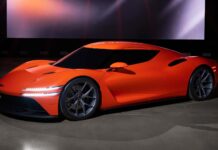The Toyota RAV4 remains Australia’s top-selling SUV by a landslide, and the 2026 model arrives with a redesigned interior, a bolder look, and a plug-in hybrid option for the first time in the country. However, these improvements come at a cost: prices have increased significantly across the range, and even the standard hybrid models now offer less power.
The question is whether the RAV4 can maintain its dominance despite these changes. Here’s a breakdown of what’s new and what buyers need to know.
Price Hike: A Significant Jump
Toyota has substantially increased the price of the RAV4. The base GX 2WD Hybrid now starts at $45,990, a $3,730 increase over the previous model. Price increases continue through the lineup, with some variants jumping by as much as $6,430.
The introduction of plug-in hybrid (PHEV) models pushes the top-end price to $66,340 for the GR Sport AWD PHEV. While one variant, the Edge AWD HEV, sees a $3,020 price cut, it’s likely due to reduced features.
Why it matters: The RAV4’s dominance has allowed Toyota to raise prices without immediate pushback. However, these increases could test buyer loyalty, especially with competitive options from Kia, Hyundai, and GWM offering strong value.
Interior Revolution: Finally Modernized
The biggest improvement in the 2026 RAV4 is its interior. The previous model felt dated, but the new version features a fully digital 12.3-inch instrument cluster and a modern 10.5-inch (or 12.9-inch in higher trims) touchscreen infotainment system.
Wireless Apple CarPlay and Android Auto are now standard, along with embedded satellite navigation. Toyota has also added a built-in dashcam function via the car’s forward-facing safety camera, a practical feature that should be standard in all new vehicles.
Key features:
- 12.3-inch digital instrument cluster
- 10.5/12.9-inch touchscreen infotainment
- Wireless CarPlay and Android Auto
- Built-in dashcam
- Connected Services (remote car status/control)
Powertrain Changes: Power Down, Efficiency Up?
The 2026 RAV4 lineup is now exclusively hybrid, split between standard hybrids and plug-in hybrids. The standard hybrids (GX, GXL, Edge, XSE, Cruiser) get Toyota’s fifth-generation 2.5-liter hybrid system.
However, the Australian market receives a reduced power output of 143kW, down from 160-163kW in the previous generation due to emissions standards. The PHEV models (XSE, GR Sport) offer significantly more power: 200kW (2WD) or 227kW (AWD), making the GR Sport the most powerful RAV4 ever.
The PHEV also boasts an EV-only range of up to 100km (WLTP) and supports 50kW DC fast-charging.
Why it matters: The power reduction in standard hybrids may be noticeable for drivers who prioritize performance. The PHEV, however, offers a compelling blend of efficiency and power.
Driving Experience: Refined but Less Punchy
The 2026 RAV4 retains the same platform as the previous generation, but there are notable changes to the driving experience. The reduced power in the hybrid models is noticeable under hard acceleration, but the new system feels smoother and more refined than before.
Toyota has improved sound deadening, reducing the thrashy engine noise common in older RAV4s. Brake pedal feel is also improved, with a more natural transition between regenerative and friction braking.
The ride quality is enhanced, making the RAV4 comfortable on both sealed and unsealed surfaces. However, the overly aggressive lane-keep assist system remains a concern, constantly interfering with steering even when disabled.
Safety: Comprehensive but Intrusive
The 2026 RAV4 comes standard with Toyota Safety Sense, including features like autonomous emergency braking, full-speed active cruise control, and blind-spot monitoring.
However, the overzealous lane-keep assist system can be frustrating, constantly correcting steering even on gravel roads. The system is difficult to disable completely, and some drivers have reported it re-engaging after being turned off.
The Verdict: Still King, but at a Cost
The 2026 Toyota RAV4 addresses the previous model’s biggest weakness – its outdated interior – with a modern, feature-rich cabin. However, the significant price increases and power reduction in the standard hybrids could deter some buyers.
The PHEV variants offer a compelling alternative with impressive performance and efficiency, but their high price tag puts them in a different market segment. Despite the changes, the RAV4 remains the dominant force in the Australian SUV market, but its reign may be tested by value-focused competitors.




















